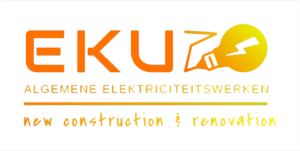Introduction
In the age of electronic digital information, educators and associations face the challenge of providing academic https://www.sopformat.com/sop-format/ integrity while likewise harnessing the power of technology to learning. Turnitin, a widely recognized plagiarism detection tool, makes use of advanced artificial intelligence (AI) to analyze student submissions and identify instances of plagiarism. This post delves into the science at the rear of Turnitin’s AI-powered plagiarism detectors, shedding light on the sophisticated algorithms and techniques which drive its effectiveness.
Knowing Plagiarism Detection
Plagiarism would be the act of presenting a person’s work, ideas, or rational property as one’s own personal without proper attribution. To maintain helpful integrity, educators rely on stealing creative ideas detection tools like Turnitin to identify and deter stealing subjects in student submissions.
Turnitin’s AI-Powered Approach
Turnitin’s piracy detection process is derived by a combination of sophisticated algorithms, machine learning, and normal language processing (NLP). Here is how it works:
Text Assessment: Turnitin starts by comparing the main submitted text with a broad database of academic content, which includes papers, articles, books, and also student submissions. This data bank, known as the Turnitin storage system, is continuously updated to guarantee accuracy and comprehensiveness.
Preprocessing: Before the comparison begins, often the submitted text undergoes preprocessing. This includes removing common avoid words, special characters, in addition to formatting to focus on the core content.
Fingerprinting: Turnitin works with a technique called “fingerprinting” or perhaps “hashing” to create a unique digital representation of the submitted text. This fingerprint is created by breaking the text towards smaller fragments, hashing individuals fragments, and then combining them into a single unique designation.
Database Comparison: Turnitin’s AJE then compares the finger-print of the submitted text having fingerprints of documents inside database. It identifies harmonizing or similar fingerprints, articulating potential instances of plagiarism.
Ladies Report: After the comparison, Turnitin generates an Originality Review, highlighting any sections of the very submitted text that match subject matter in its database. Educators can easily review these matches to find out if plagiarism has took place and, if so, to what severity.
Key Features of Turnitin’s AI-Powered Plagiarism Detection
Continuous Learning: Turnitin’s AI continuously understands and adapts to originating patterns of plagiarism. It again incorporates feedback from teachers to improve its accuracy and efficiency.
Customization: Educators can alter Turnitin’s settings to meet the suitable needs of their institution and their assessment criteria. They can set thresholds for similarity along with determine how Turnitin handles abrégé and references.
Feedback and also Education: Turnitin not only finds potential plagiarism but also offers educators with valuable opinions to facilitate teachable occasions. This feedback can help trainees understand why certain portions of these work are flagged in addition to guide them toward the right citation practices.
Citation along with Referencing Analysis: Turnitin’s AJE can analyze citations and even references to ensure they abide by the chosen citation form (e. g., APA, MLA). This feature helps teachers address issues related to improper citation formats.
Compatibility: Turnitin integrates seamlessly with various knowing management systems (LMS) and give a user-friendly interface with regard to educators and students.
Lawful Considerations
While Turnitin’s AI-powered plagiarism detection is a invaluable tool for upholding instructional integrity, it also raises ethical questions. Some concerns involve:
Privacy: The use of AI to assess student submissions raises additional privacy concerns. It’s crucial for institutions to have clear packages in place regarding data range and usage.
False Pluses: Turnitin’s algorithms may oftentimes generate false positives, flagging text as potentially pirated when it is not. Educators need to carefully review flagged articles to avoid unjust accusations.
Academic Approach: Some argue that aligning solely on plagiarism detection may miss an opportunity for the more educational approach. Rather then punitive measures, institutions should emphasize teaching proper fragment and research skills.
Answer
Turnitin’s AI-powered plagiarism sensors is a powerful tool in order to educators maintain academic integrity and foster a tradition of originality. By blending advanced algorithms, machine mastering, and NLP techniques, Turnitin can efficiently identify instances of plagiarism in student articles. However , it’s essential for school staff and institutions to use this particular tool ethically, striking a fair balance between preventing plagiarism and giving educational support to individuals. As technology continues to grow, so too will the capabilities in addition to ethical considerations of AI-powered plagiarism detection tools similar to Turnitin.

